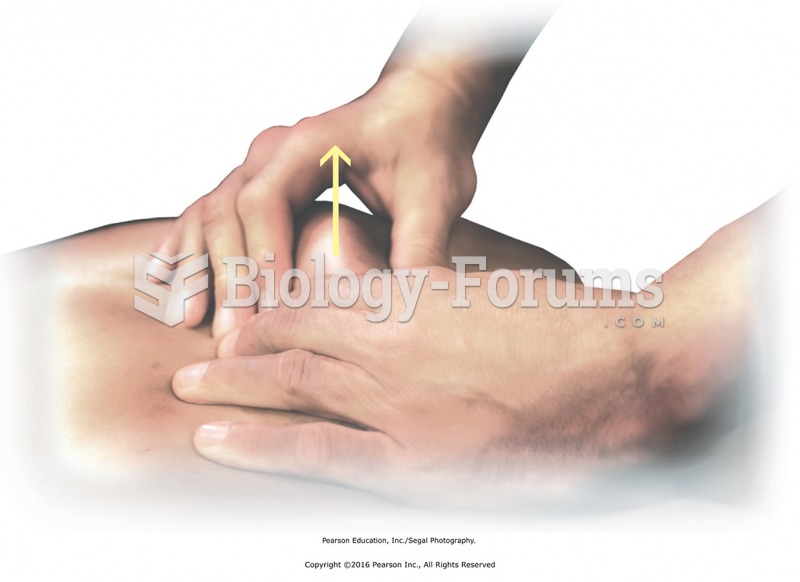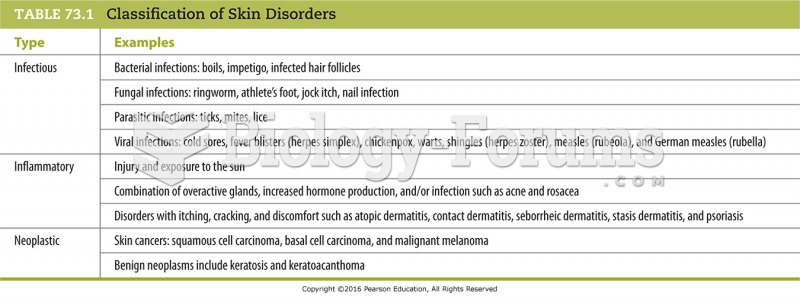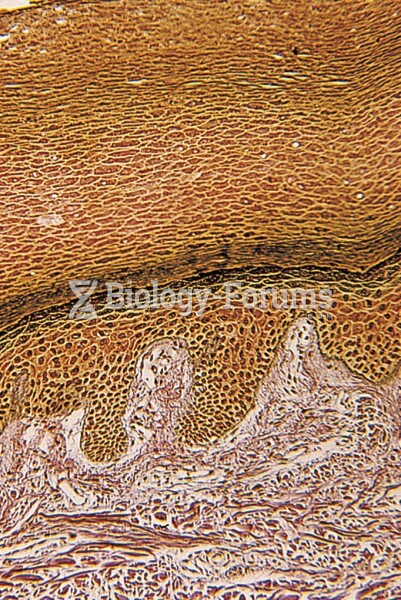|
|
|
Eating food that has been cooked with poppy seeds may cause you to fail a drug screening test, because the seeds contain enough opiate alkaloids to register as a positive.
Congestive heart failure is a serious disorder that carries a reduced life expectancy. Heart failure is usually a chronic illness, and it may worsen with infection or other physical stressors.
A headache when you wake up in the morning is indicative of sinusitis. Other symptoms of sinusitis can include fever, weakness, tiredness, a cough that may be more severe at night, and a runny nose or nasal congestion.
In most cases, kidneys can recover from almost complete loss of function, such as in acute kidney (renal) failure.
In the United States, an estimated 50 million unnecessary antibiotics are prescribed for viral respiratory infections.
 Using both hands, gently but firmly grasp the skin over a spot on the upper back, and lift the skin ...
Using both hands, gently but firmly grasp the skin over a spot on the upper back, and lift the skin ...
 Apply skin rolling by lifting the skin and crawling your fingers along the skin while the thumbs ...
Apply skin rolling by lifting the skin and crawling your fingers along the skin while the thumbs ...





